Introduction
Get ready to embark on a wild journey into the world of rats and rabbits. Today, we’re diving deep into the complexities of their relationship.
It may sound like an unusual question, but trust me, the natural world is full of surprises! As an animal enthusiast and nature lover, I’m always intrigued by the intricate dynamics between different species.
Before we jump into the thrilling details, we need to understand a bit about rats and rabbits. Rats, those resourceful creatures found in both urban environments and the wild, are known for their adaptability and sharp instincts.
On the other hand, rabbits are timid herbivores, relying on their powerful hind legs for defense. They munch on grasses, leaves, and other plant materials to keep their fluffy tails hopping.
Now, the big question: Can rats actually prey on rabbits? Let’s examine the available evidence and documented observations together.
Naturally, these events tend to occur when rabbits are vulnerable, such as when they’re weak from illness or injury, or when baby rabbits, known as kits, are defenseless without the protection of their parents. Another factor that may contribute to these interactions is when rats are able to access enclosed spaces where rabbits may be trapped.
However, it’s important to note that healthy adult rabbits are not the primary targets for rats. These agile creatures possess the speed, agility, and defenses necessary to fend off potential rat attacks.
Now that we have a taste of what’s to come, let’s dive deeper into the intricacies of rat and rabbit interactions. From predator-prey relationships to mutual coexistence, we’re about to uncover the secrets of these fascinating creatures.
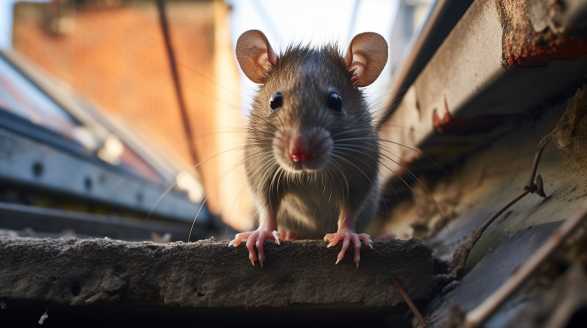
Key Takeaways
Key Takeaways:
- While it is rare, there have been cases of rats preying on rabbits, but it usually occurs when rabbits are vulnerable, such as when they are weak or injured, or when baby rabbits are defenseless.
- Healthy adult rabbits are not the primary targets for rats due to their size, agility, and defenses. Rats are more likely to scavenge on rabbit carcasses or remains.
- Rats and rabbits can coexist in shared habitats, but they may compete for resources such as food and shelter.
- Creating a secure environment for pet rabbits is important to protect them from rat attacks. Measures such as securing housing, regular cleaning, and monitoring for rat activity can help prevent incidents.
- Rabbits may be vulnerable to rat attacks due to their limited vision range, lack of predation awareness, and reduced agility in confined spaces.
- Implementing predator deterrents, securing rabbit enclosures, and using natural repellents can help mitigate the risk of rat predation.
- Rats are skilled hunters and employ techniques such as ambush predation, coordinated attacks, and hunting during the night, which can make them a potential threat to rabbits.
- Understanding the predatory behavior of rats and vulnerabilities of rabbits can help in taking necessary precautions to ensure the safety and well-being of pet rabbits.
- Despite the potential threat, coexistence between rats and rabbits is possible, and their interaction in nature is minimal. Their differing habitats and dietary preferences generally allow them to coexist peacefully.
Can Rats Kill and Consume Rabbits? Examining the Facts
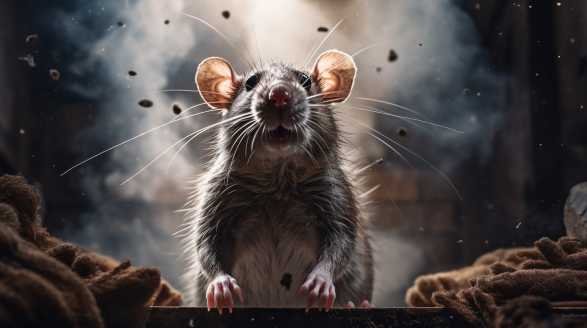
As an animal enthusiast and someone always curious about the natural world, I found myself asking a rather peculiar question: Can rats kill and consume rabbits? It may seem like an odd query, but the intricacies of nature often surprise us with unexpected behaviors.
Understanding the Behavior of Rats and Rabbits
Before delving into whether rats can prey on rabbits, it is vital to have a basic understanding of these two creatures and their behaviors.
Rats: Masters of Survival
Rats, commonly found in both urban environments and the wild, are known for their adaptability and resourcefulness. They possess sharp teeth and strong jaws, which allow them to gnaw through a wide array of materials.
Rabbits: Timid and Alert
Rabbits, on the other hand, are herbivorous animals known for their remarkable agility. Unlike rats, they lack sharp teeth and rely on their powerful hind legs for defense.
Their primary defense mechanism against predators is their remarkable ability to evade capture through swift movements.
Can Rats Kill and Consume Rabbits?
To answer the question at hand, let us examine the available evidence and documented observations.
Instances of Rat Predation on Rabbits
While rat predation on rabbits is relatively rare, there have been a few documented cases of rats killing and consuming rabbits. These events typically occur when rabbits are vulnerable and their usual defense mechanisms fail.
- When rabbits are weakened: If a rabbit is already weakened due to illness, injury, or malnutrition, it becomes easier prey for rats. In such instances, rats may take advantage of the rabbit’s compromised state and attack them.
- Young and defenseless rabbits: Baby rabbits, known as kits, are particularly vulnerable due to their limited mobility and lack of developed defense mechanisms. Rats may prey on kits in the absence of effective parental protection.
- Enclosed environments or burrows: Rats are excellent at navigating tight spaces and can enter rabbit burrows or confined areas, such as cages, where rabbits may be trapped. In these situations, the prey is unable to escape, making it an easy target for rats to attack and consume.
Unlikely Nature of Rat Predation on Healthy Adult Rabbits
While instances of rat predation on rabbits exist, it is essential to note that healthy adult rabbits are not the primary target for rats. Adult rabbits are agile and equipped with powerful hind legs that allow them to avoid potential predators.
It is more typical for rats to scavenge on rabbit carcasses or consume remains rather than actively hunting and killing healthy adult rabbits. Rabbits’ herbivorous diet and their usual habitat preferences also contribute to the low frequency of rat-rabbit interactions in the wild.
The Importance of Ecological Roles
Understanding the natural behavior of different animal species is crucial to comprehend their ecological roles within an ecosystem. While it may be surprising to some, rats play an essential role in the ecosystem’s dynamics as both predators and scavengers.
After examining the facts, it is clear that while instances of rats killing and consuming rabbits do occur, they are relatively rare. Healthy adult rabbits possess the speed, agility, and defenses necessary to fend off potential rat attacks.
It is fascinating to explore the intricacies of nature and the interplay between different species. Understanding the behavior and ecological roles of animals can provide us with a deeper appreciation for the dynamic balance that exists in the natural world.
Rabbit Breeding Safety: How to Protect Your Rabbits from Rats
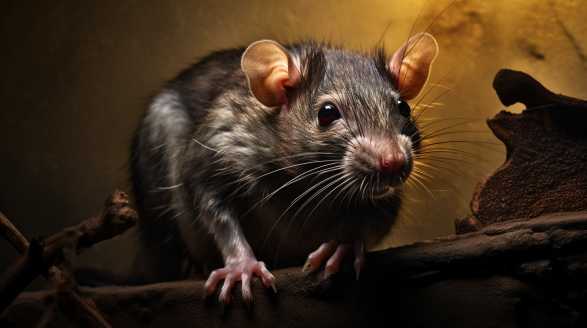
As a rabbit breeder, I understand the importance of maintaining a safe and secure environment for my furry friends. One of the major concerns that all rabbit breeders face is the threat of rats.
I will share some valuable tips and techniques to help you protect your precious rabbits from rat infestations.
Importance of Rabbit Breeding Safety
Ensuring the safety of your rabbit breeding operation is crucial for several reasons. Firstly, rats carry various diseases, including tularemia, leptospirosis, and salmonella, which can be transmitted to rabbits.
Additionally, rats can harm the rabbits physically by biting them or potentially killing them. Therefore, taking proactive steps to safeguard your rabbits from rats is essential.
Identifying Rat Infestations
Before discussing the preventive measures, let’s first understand how you can identify if your rabbitry is infested with rats. Here are some signs to look out for:
- Droppings: Rat droppings are small and dark in color, resembling grains of rice. Keep an eye out for these droppings in and around your rabbit housing.
- Gnaw Marks: Rats have a habit of chewing on various objects, including wooden hutches and cages. Look for gnaw marks or signs of damage to identify rat infestations.
- Nests: Rats build nests using materials found in your rabbitry, such as straw, hay, or shredded paper. If you notice suspicious nests in the vicinity of your rabbits, it’s likely that rats are nearby.
Effective Rat Prevention Techniques
Now that we have discussed the importance of rabbit breeding safety and how to identify rat infestations, let’s look into the preventive measures you can take to protect your rabbits from rats:
1. Secure Your Rabbit Housing
Rabbits need a safe and well-constructed housing environment. Ensure there are no gaps or holes through which rats can enter.
Seal any potential entry points with sturdy materials such as wire mesh or metal.
2. Regular Cleaning and Sanitization
Maintaining cleanliness in your rabbitry is crucial to prevent rat infestations. Develop a cleaning schedule and stick to it.
Ensure proper disposal of waste to avoid rat attractants such as food scraps or soiled bedding.
3. Use Rat-Proof Containers for Rabbit Food Storage
Rats are attracted to food sources. Protect your rabbit’s food and treats by using rat-proof containers.
4. Maintain a Rat-Free Perimeter
Keeping the immediate area surrounding your rabbitry free from rats is equally important. Consider these measures:
- Remove Clutter: Clear away any debris, stacked firewood, or piles of leaves that could serve as hiding places for rats.
- Trim Vegetation: Keep grass, bushes, and trees near your rabbit housing trimmed. Rats often use vegetation as pathways to access rabbit hutches.
- Install Barriers: Create physical barriers such as fencing or concrete footers to prevent rats from burrowing into your rabbitry.
5. Implement Traps and Baits
If despite your best efforts, rats manage to infiltrate your rabbitry, it’s time to implement traps and baits:
- Snap Traps: Snap traps are an effective and humane option for capturing rats. Place these traps strategically in areas frequented by rats, but make sure your rabbits cannot access them.
- Live Traps: Consider using live-capture rat traps. Once caught, release the trapped rat far away from your rabbitry.
- Baits: Use bait stations that are safe for rabbits. Keep in mind that certain rat poisons can be harmful to your rabbits if ingested accidentally.
6. Regular Monitoring and Inspection
Monitor your rabbitry regularly for signs of rat activity. Conduct thorough inspections to identify any potential entry points or nests.
As a responsible rabbit breeder, it is your duty to prioritize the safety and well-being of your rabbits. By following these preventive measures and closely monitoring your rabbitry for rat activity, you can protect your rabbits from potential harm and disease.
Stay vigilant, be proactive, and create a rat-resistant rabbit breeding operation.
Understanding the Relationship Between Rats and Rabbits in the Wild
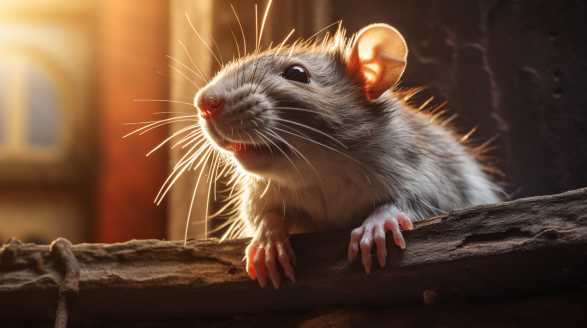
Hello there! Today, we are going to embark on an journey to unravel the complexities of the relationship between rats and rabbits in the wild.
So, let’s look into this fascinating topic and explore the intricate dynamics between rats and rabbits.
Before we dive into the wild, let’s take a moment to acquaint ourselves with our protagonists. Rats and rabbits are both mammals belonging to the order Rodentia, but they belong to different families—rats to Muridae and rabbits to Leporidae.
Rats
- Rats are highly adaptable rodents that can be found worldwide.
- They come in various species, including the common brown rat and the black rat.
- Rats are known for their keen intelligence, sharp teeth, and long, hairless tails.
- They are prolific breeders and can quickly establish themselves in different environments.
- Though often deemed pests due to their scavenging nature, rats play crucial roles in ecosystems as prey for many predators.
Rabbits
- Rabbits are small herbivores known for their fluffy fur and long ears.
- They are native to Europe, Africa, and parts of Asia, but humans have introduced them to many other regions.
- Rabbits are social animals that inhabit burrows, commonly known as warrens.
- They have evolved powerful hind legs for quick escapes from predators.
- Due to their rapid reproduction, rabbits can have a significant impact on vegetation in some habitats.
Habitat Overlap: Where Rats and Rabbits Meet
In the vast wilderness, there are specific habitats where the paths of rats and rabbits cross. These shared habitats provide opportunities for interaction and potentially influence the relationship between them.
Urban Areas
- Urban environments, with their abundance of food and shelter, attract both rats and rabbits.
- Rats often infest sewers, attics, and garbage areas, while rabbits seek out parks and vacant lots.
- In these settings, rats and rabbits may compete for limited resources, such as food and nesting sites.
- However, due to differences in their diets and preferences, direct competition is typically minimal.
Agricultural Lands
- Agricultural fields, especially those with crops like carrots and lettuce, attract rabbits.
- Rats, on the other hand, are attracted to agricultural areas for the sake of grains and other cultivated foods.
- As both species navigate these landscapes, their paths may intersect, leading to occasional encounters.
- In some instances, rats may prey on vulnerable rabbit kits or compete for burrows.
Natural Ecosystems
- Natural ecosystems, such as grasslands and forests, provide varied opportunities for rat-rabbit interactions.
- Both species can coexist in these environments, utilizing different niches and resources.
- Rabbits may create intricate burrow systems, which rats may opportunistically utilize for nesting or foraging.
- Additionally, rats may prey on rabbit kits if they come across unguarded burrows.
Relationships Explored: Predation, Competition, and More
Beyond encountering each other in shared habitats, rats and rabbits can exhibit various relationships that shape their dynamic coexistence. Let’s dissect some key aspects:
Predation
- While rats are primarily omnivores, they are opportunistic predators and may prey on young or injured rabbits.
- This predation, although not particularly common, can have local impacts on rabbit populations.
- It is worth noting that rabbits have evolved sophisticated anti-predator behaviors, including quick escapes and camouflaging among vegetation.
Competition
- Rats and rabbits may indirectly compete for resources like seeds, fruits, and vegetation.
- However, their diets differ to some extent, with rabbits being strict herbivores and rats being more omnivorous.
- This dietary distinction allows them to coexist by utilizing different food sources within an ecosystem.
Habitat Sharing and Utilization
- Rabbits often create intricate burrows, known as warrens, primarily for shelter and reproduction.
- These burrows can serve as a handy resource for rats, providing shelter or even a temporary nesting site.
- While this might suggest some level of commensalism, it is important to consider that rabbits may aggressively defend their burrows against intruders.
Disease Transmission
- Rats are notorious for carrying diseases that can be transmitted to humans and potentially other animals.
- Although uncommon, there have been instances where rats transmitted diseases to rabbits.
- The possibility of disease transmission further emphasizes the importance of maintaining a balance within ecosystems.
As we conclude our journey into the intriguing world of rats and rabbits in the wild, it is evident that their relationship is complex and influenced by various factors. While predation and competition do exist between them, they can also coexist and utilize different resources within shared habitats.
So, next time you come across a rat or a rabbit during your outdoor adventures, take a moment to reflect on their captivating relationship and the wonders of the natural world. Happy exploring!
Assessing the Risk: How Often Do Rats Prey on Rabbits?
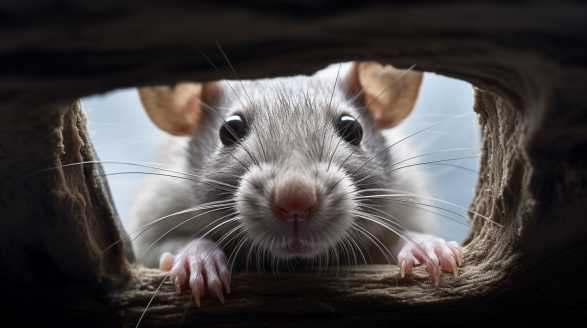
As someone who has always been fascinated by the animal kingdom, I often find myself pondering on the various interactions and dynamics that exist between different species. Recently, one question that has piqued my curiosity is: How often do rats prey on rabbits?
The Rat-Rabbit Relationship
Rats and rabbits, despite both being small mammals, belong to different families. Rabbits are members of the Leporidae family, while rats belong to the Muridae family.
Understanding Rat Diets
Rats are omnivorous creatures, which means they have a varied diet that includes both plant material and animal matter. While they predominantly feed on grains, seeds, fruits, and vegetables, they are known to opportunistically prey on small animals if the opportunity presents itself.
The Ambiguity: How Often Does Rat Predation on Rabbits Occur?
The frequency of rat predation on rabbits is a topic that lacks in-depth research. It’s challenging to determine a precise number or occurrence rate for this specific interaction.
Case Studies and Observations
- Urban Environments:
- In urban settings, where rats often have limited access to their natural food sources, instances of rat predation on rabbits have been reported. This is primarily due to the scarcity of food options, which can drive rats to become more opportunistic hunters.
- Opportunistic Predators:
- Rats are opportunistic predators, meaning they seize chances when they arise. If a rat encounters a weakened or injured rabbit, it may take advantage of the situation and prey upon it. This behavior is more likely to occur in instances where the rat believes it can overwhelm and successfully capture the rabbit.
- Juvenile Rabbits:
- Juvenile rabbits may be more vulnerable to rat predation. Young rabbits lack the experience and size advantage of adult rabbits, making them an easier target for opportunistic rats.
Factors Influencing Rat Predation
While it’s difficult to determine the exact frequency of rat predation on rabbits, certain variables can influence the likelihood of this interaction occurring. These factors include:
- Availability of Natural Food Sources:
- When natural food sources for rats are abundant, such as grains and fruits, they are less likely to resort to hunting small animals like rabbits.
- Urbanization and Habitat Fragmentation:
- Urban environments, with their fragmented habitats and scarcity of food options, can lead rats to seek alternative sources of sustenance, potentially increasing instances of rat predation on rabbits.
- Rabbit Population Density:
- Regions with high rabbit populations may attract predators such as rats. Increased competition for resources can push rats to hunt rabbits as another means of survival.
The Balance of Nature
While rat predation on rabbits may occur sporadically, it is essential to remember that all species play a role in the delicate balance of nature. Predation is a natural mechanism that helps regulate populations, promote genetic diversity, and maintain ecological stability.
Assessing the risk associated with rats preying on rabbits proves to be a complex matter due to the scarcity of extensive research on the topic. While rats are opportunistic predators capable of capturing and consuming rabbits, the frequency of this interaction remains uncertain.
As we continue to explore and learn about the animal kingdom, let us appreciate the intricacies and marvels of these remarkable interactions.
Rat and Rabbit Interactions: Coexisting or Competing for Resources?
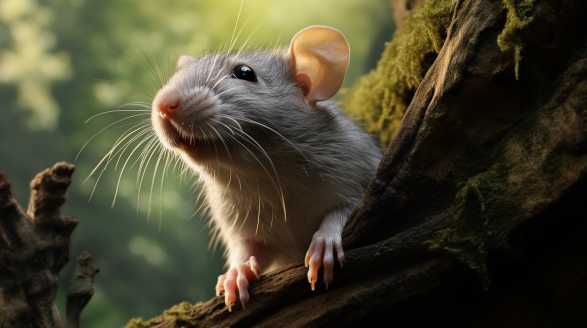
Being an animal lover and a nature enthusiast, I’ve always been fascinated by the dynamics between different species and how they interact with each other. One particular relationship that has piqued my curiosity is that of rats and rabbits. These small mammals are commonly found in urban and rural areas, often occupying similar habitats. Are they able to coexist peacefully or do they end up competing for resources? Let’s dig deeper and explore this intriguing topic.
Understanding Rats and Rabbits
Before we dive into their interactions, let’s gain a better understanding of rats and rabbits individually.
Rats
- Rats are highly adaptable rodents known for their intelligence and problem-solving skills.
- They come in various species, including the Norway rat and the roof rat, which commonly inhabit urban areas.
- Rats are omnivorous and can survive on various food sources, including plants, grains, and even other animals.
- They reproduce rapidly, leading to large populations if left unchecked.
Rabbits
- Rabbits are small herbivorous mammals known for their long ears and powerful hind legs.
- They have different species, with the most common being the European rabbit and the cottontail rabbit.
- Rabbits primarily feed on grasses, leaves, and other green vegetation.
- They are prolific breeders, with a shorter gestation period than rats.
Habitat Overlap and Competition
Both rats and rabbits have adaptability as a common trait, allowing them to thrive in various environments. This adaptability often leads to overlapping habitats, creating opportunities for interactions and potential competition.
1. Food
- Rats: Rats have a wider range of dietary options compared to rabbits, making it easier for them to find food in urban environments. They can scavenge from garbage cans, raid crops, or even hunt small animals.
- Rabbits: While rabbits primarily rely on vegetation, they also face competition from deer, larger herbivores, and, of course, rats.
2. Shelter
- Rats: Rats are skilled diggers and can create intricate burrows under the ground or inside buildings, providing them with secure shelter.
- Rabbits: Rabbits prefer burrowing for shelter as well, but their burrows are less complex than those of rats.
3. Water
- Rats and rabbits both require a water source, but rats have a higher tolerance for dehydration and can survive longer without constant access to water.
With these resources in mind, it’s essential to acknowledge that competition is a natural aspect of wildlife interactions. However, coexistence can also occur when there are sufficient resources available.
Potential Interactions between Rats and Rabbits
Now that we understand the ecological context, let’s explore the potential types of interactions that can occur between rats and rabbits:
- 1. Direct Competition: In situations where resources are limited, rats and rabbits may directly compete for food and shelter. This competition becomes more likely in urban environments where resources can be scarce.
- 2. Indirect Competition: Rats and rabbits may not directly interact but indirectly compete by altering the availability of resources. For example, rats digging burrows or eating vegetation may disrupt the rabbits’ habitats and food sources, indirectly affecting their well-being.
- 3. Predation: Both rats and rabbits are preyed upon by larger predators like foxes, coyotes, and birds of prey. However, rabbits, being herbivorous and more visible in open areas, may be more vulnerable to predation compared to rats.
Strategies for Coexistence
While competition is inevitable, there are instances where rats and rabbits can coexist in harmony. Here are some strategies that facilitate coexistence:
- 1. Preferred Habitats: Rats tend to occupy urban areas, while rabbits are commonly found in more natural or rural settings. By inhabiting different spaces, the direct competition between them can be reduced.
- 2. Diverse Food Sources: Ensuring an abundance of food options can help mitigate resource competition. By providing alternative food sources like bird feeders or planting diverse vegetation, the pressure on limited resources can be alleviated.
- 3. Predator Presence: The presence of natural predators can help keep both rat and rabbit populations in check. For example, the presence of owls or foxes may deter rats, reducing their numbers and indirectly preventing competition.
- 4. Habitat Management: Maintaining a balanced ecosystem through proper habitat management can support the coexistence of rats and rabbits. This involves preserving native vegetation, controlling garbage accumulation, and minimizing human-related disturbances.
In the realm of ecology, the relationship between rats and rabbits is complex, entailing both competition and the possibility of coexistence. As humans, we play a crucial role in shaping their interactions by managing resources and promoting a healthy ecosystem.
Nature often surprises us with its delicate balance, and the coexistence of rats and rabbits is just another example of its remarkable complexity.
Are Pet Rabbits Safe from Rat Attacks? Precautions to Take
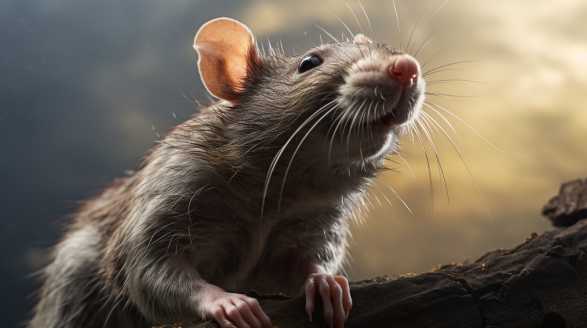
As a long-time rabbit owner, I have always been concerned about the safety and well-being of my furry friends. One question that often comes to mind is, “Are pet rabbits safe from rat attacks?” It is a valid concern as rats can pose a threat to the safety and health of our beloved rabbits.
Understanding the Potential Danger
Rats are notorious for their ability to infiltrate homes and wreak havoc. They are skilled at finding small openings to access buildings, and once inside, they can cause immense damage to property and pose risks to the inhabitants, including pet rabbits.
Moreover, they can transmit various diseases to both humans and animals, making it crucial to take precautions to keep our pet rabbits safe and healthy.
Securing the Rabbits’ Environment
To protect your pet rabbits from potential rat attacks, it is essential to create a secure and predator-proof environment. Here are some precautionary measures you should consider:
- Housing: Invest in a sturdy and well-built hutch or cage that keeps rats out. Ensure there are no gaps or holes that could serve as entry points for rats. Regularly inspect and repair any damages to the housing.
- Elevate the Habitat: Place the rabbits’ housing on stilts or legs to keep it above ground level. This makes it more difficult for rats to access the enclosure and provides an added layer of protection.
- Wire Mesh: Use fine wire mesh that is rat-proof to line the sides and the floor of the rabbit housing. This prevents rats from burrowing or gnawing their way into the enclosure.
- Secure Doors and Latches: Ensure that all doors and latches are sturdy and rodent-proof. Rats are intelligent creatures that can manipulate weak or loose fastenings to gain entry.
- Regular Cleaning: Keep the rabbits’ housing clean and free from food leftovers. Regularly remove any food waste from the enclosure to minimize the attraction for rats.
Implementing Rat Deterrents
While securing the rabbits’ environment is crucial, there are additional steps you can take to deter rats from approaching your pet rabbits. Here are some effective deterrents to consider:
- Keep Food Secure: Store rabbit food in tight-sealed containers made of metal or heavy-duty plastic. Rats are less likely to be attracted to well-sealed containers.
- Remove Potential Shelter: Eliminate potential hiding spots and nesting areas for rats near the rabbits’ housing. Clear away clutter and debris in the vicinity to make it less appealing for rats to build their nests.
- Automatic Lighting: Install motion-activated lights around the rabbits’ housing area. This will deter rats, who prefer darkness, from approaching the vicinity.
- Sensor-Activated Sprinklers: Consider installing sprinklers that are triggered by motion sensors. If a rat comes too close, it will get sprayed with water, deterring it from approaching the rabbits’ enclosure.
Monitoring for Rat Activity
Even with precautions in place, it is crucial to stay vigilant and monitor for signs of rat activity. By being proactive and observant, you can detect any potential issues early on and take necessary action.
- Droppings and Gnaw Marks: Regularly inspect the rabbits’ housing and the surrounding area for rat droppings or gnaw marks. These are clear indications that rats are in the vicinity.
- Unusual Behavior in Rabbits: Keep an eye on your pet rabbits and observe any changes in their behavior. Increased anxiety, restlessness, or signs of stress might indicate that there are rats nearby.
- Burrows or Nests: Inspect the ground around the rabbits’ enclosure for signs of burrows or nests. Rats are known to create underground tunnels and nests close to their food sources.
- Unexplained Loss of Food: If you notice a significant decrease in the amount of food your rabbits consume, it could be an indication that rats are stealing their food.
Seeking Professional Help
In some cases, despite all the precautions, rats may still pose a threat to your pet rabbits. If you notice a persistent rat problem that you cannot manage on your own, it is advisable to seek professional help.
Pet rabbits are not entirely safe from rat attacks, but by implementing the right precautions, you can significantly reduce the risk. Providing a secure environment, using rat deterrents, monitoring for rat activity, and seeking professional assistance when needed are essential steps to ensure the safety and well-being of your pet rabbits.
Investigating Rat Hunting Techniques: A Potential Threat to Rabbits
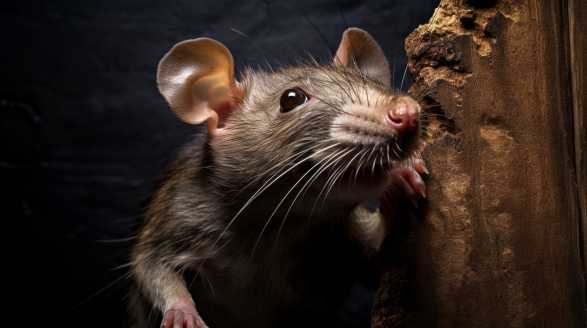
As a nature enthusiast and animal lover, I have always been fascinated by the various hunting techniques employed by different animals. I aim to shed light on the lesser-known topic of rat hunting techniques and the potential threat they pose to rabbits.
The Growing Rat Population: A Cause for Concern
Rats have been a common sight in both urban and rural areas for centuries. Their ability to adapt to various environments and reproduce rapidly has led to a significant increase in their population over the years.
The Unseen Terrors of Rat Hunting
Rats are not simply opportunistic feeders; they are skilled and cunning hunters that employ various techniques to secure their prey. Unfortunately, rabbits often fall victim to these stealthy predators.
1. Ambush Predators
Rats are known for their patience when it comes to securing a meal. They often lie in wait, hidden in strategic locations near the rabbit’s habitat.
2. Coordinated Attacks
Rats are intelligent creatures that often hunt in groups. By utilizing strength in numbers, they can overwhelm their prey and increase their chances of success.
3. Nighttime Predators
Rats are primarily nocturnal creatures, making the night their prime hunting time. Their exceptional night vision gives them an advantage over the rabbit, which relies heavily on daytime visibility.
Rabbit Vulnerabilities and Countermeasures
It is essential to understand the vulnerabilities of rabbits to comprehend the potential threat posed by rat hunting techniques. Rabbits, although agile and quick, have certain inherent weaknesses that make them susceptible to rat attacks.
1. Limited Vision Range
Rabbits have a relatively narrow field of vision, which leaves them susceptible to ambush predators like rats. Due to their inability to spot potential threats from all angles, rabbits often fall victim to the element of surprise.
2. Lack of Predation Awareness
Rabbits, being herbivores, do not have the same level of predation awareness as carnivorous animals. This lack of experience and intuition in detecting potential predators allows rats to seize the advantage.
3. Reduced Agility in Confined Spaces
Rabbits are renowned for their agility and speed in open spaces. However, when cornered or forced into confined spaces, their ability to escape is significantly compromised.
Protecting Our Rabbit Friends: Practical Solutions
Now that we have explored the various rat hunting techniques and the vulnerabilities of rabbits, it is crucial to look at practical solutions to protect these gentle creatures. Here are some countermeasures and preventive measures that can be implemented to safeguard rabbits from rat predation:
1. Predator Deterrents
Installing predator deterrents such as motion-activated lights and noise devices can disrupt rats’ hunting patterns and deter them from approaching rabbit habitats. The sudden burst of light or noise can startle the rats, preventing them from successfully ambushing their prey.
2. Secure Enclosures
Constructing secure enclosures specifically designed to keep rats out while allowing rabbits room to roam is an effective preventive measure. This physically limits the rats’ access to the rabbits, decreasing the chances of successful attacks.
3. Natural Repellents
Certain natural repellents, such as the scent of predator droppings or certain plants, can deter rats from approaching rabbit habitats. Regularly scattering these repellents around the vicinity of the rabbits can create an environment that rats find inhospitable.
Investigating rat hunting techniques has shed light on the potential threat they pose to vulnerable animals like rabbits. Understanding the tactics employed by these cunning predators is essential in implementing effective preventive measures.
Let us work towards creating a safe and harmonious environment in which all creatures can thrive.
The Predatory Behavior of Rats: Do They Prey on Rabbits?
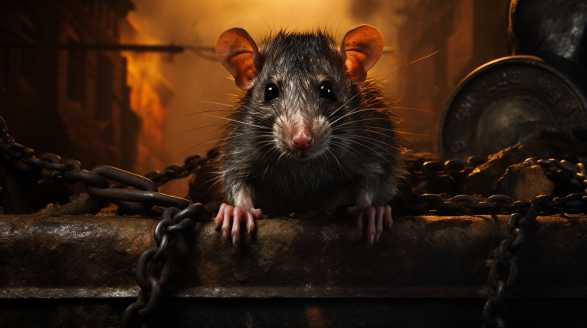
Have you ever wondered about the predatory behavior of rats? As a curious observer of nature, I couldn’t help but ponder whether these seemingly harmless creatures could possibly prey on rabbits.
So, let’s embark on this fascinating journey and reveal the truth!
Understanding the Nature of Rats
Before we look into the predatory aspect, let’s take a moment to understand the nature of rats. Rats are highly adaptive creatures, known for their ability to thrive in various environments, making them one of the most successful mammal species.
Rats are primarily omnivores, meaning they have a varied diet that includes both plant matter and small animals.
The Diet of Rats
Rats are opportunistic eaters, capable of consuming a wide range of food sources. Their diet generally comprises fruits, nuts, grains, insects, small vertebrates, and even the occasional carrion.
Do Rats Prey on Rabbits?
Now, let’s explore the question at hand: Do rats prey on rabbits? The straightforward answer is that it is highly unlikely for a rat to prey on a healthy adult rabbit.
Physical Limitations
Rats are relatively small creatures compared to rabbits, both in terms of body size and strength. While they can be opportunistic hunters, their physical limitations make it improbable for them to overpower a healthy adult rabbit.
It is more likely for a rat to scavenge on the remains of a deceased rabbit rather than actively hunt one down.
Focused on Smaller Prey
As mentioned earlier, rats have an opportunistic and adaptable nature when it comes to food sources. They are more likely to focus their predatory behavior on smaller prey that are within their size range and pose less of a threat.
Urban vs. Rural Environments
The predatory behavior of rats may also vary depending on the environment they inhabit. In urban areas, where food sources may be abundant and readily available, the need for hunting may decrease.
However, in rural environments where resources may be limited, rats might be more inclined to actively hunt small animals to supplement their diet.
Instances of Rats Preying on Rabbits
While it is uncommon for rats to actively hunt rabbits, there have been rare instances where such behavior has been observed. In situations where rabbits are sick, injured, or in a weakened state, they become more vulnerable to predation.
However, it is important to note that these instances are outliers and not representative of the typical relationship between rats and rabbits.
Mutual Interaction and Coexistence
In most cases, rats and rabbits tend to coexist without direct interactions. Their differing habitats, behaviors, and dietary preferences often minimize the chances of conflict.
Generally, their paths rarely cross in nature, allowing them to coexist peacefully.
After exploring the predatory behavior of rats and their potential to prey on rabbits, it is clear that the likelihood of such interactions is minimal. While instances of rats preying on rabbits may occur under extraordinary circumstances, they do not represent the norm.
Therefore, if you come across a rat, there is no need to worry about it targeting rabbits. These fascinating creatures have their own unique way of navigating the natural world, and their predatory behavior is not a cause for concern when it comes to rabbits.
Conclusion
In conclusion, exploring the relationship between rats and rabbits has been quite a fascinating journey. While there have been rare instances of rats preying on rabbits, it is important to note that these occurrences are not the norm.
Rats are more likely to scavenge on rabbit remains rather than actively hunting them.
As pet owners, it is crucial to take precautionary measures to protect our rabbits from potential rat attacks. Creating a secure environment for our furry friends by securing their housing, regularly cleaning, and monitoring for rat activity can significantly reduce the risk.
Understanding the predatory behavior of rats and the vulnerabilities of rabbits allows us to take the necessary precautions to ensure the safety and well-being of our pets. While rats are skilled hunters, their interactions with rabbits in nature are minimal due to their differing habitats and dietary preferences.
Nature is full of surprises, and the complex dynamics between different species never fail to captivate us. As we continue to explore and learn about the natural world, let’s embrace the wonders of these intricate relationships and strive to create a harmonious environment for all creatures.
Frequently Asked Questions
Do rats eat rabbits?
No, rats generally do not eat rabbits. Rats are omnivores and their diet mainly consists of grains, fruits, vegetables, and small insects.
Can rats harm rabbits?
Yes, rats can potentially harm rabbits. Although rats do not typically prey on rabbits, they can sometimes attack smaller rabbits, especially young ones.
How can I protect my rabbits from rats?
To protect your rabbits from rats, make sure they are kept in a sturdy and secure enclosure that is completely closed off from rodents. Ensure there are no gaps or openings where rats could gain access.
Are rabbits and rats compatible as pets?
Rabbits and rats are generally not compatible as pets. They have different social and behavioral needs, and keeping them together can lead to stress, aggression, and potential harm to either animal.
What should I do if I suspect a rat infestation near my rabbits?
If you suspect a rat infestation near your rabbits, it is important to take immediate action. Remove any potential food sources, seal off any openings or gaps in the enclosure, and consider seeking professional pest control services to eliminate the rats and prevent further infestation.
What are the signs of a rat infestation?
Signs of a rat infestation include chewed or gnawed items, droppings, tracks, smeared marks along walls, squeaking or scratching sounds, and the presence of nests or burrows. If you notice any of these signs near your rabbits’ enclosure, it is crucial to address the issue promptly.
Can rats transmit diseases to rabbits?
Yes, rats can transmit diseases to rabbits. Some of the diseases that rats can carry include leptospirosis, tularemia, hantavirus, and salmonellosis. It is essential to ensure that your rabbits are protected from rats to prevent the potential transmission of diseases.
